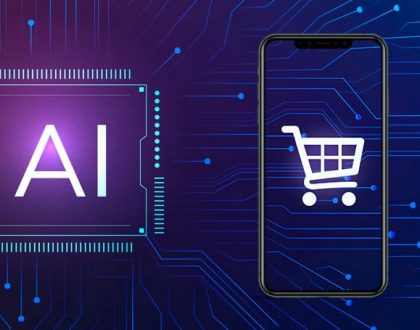Use of Headless eCommerce

Headless eCommerce is a modern approach to building eCommerce websites that separates the frontend and backend of the site. By doing so, businesses can create a more flexible, scalable and secure website that is tailored to their specific needs. It also allows them to leverage existing technologies and platforms for better performance, cost savings and customer experience. Headless eCommerce has become an attractive option for many businesses as it offers numerous benefits such as faster page loading times, improved security, increased flexibility and scalability. This article will discuss the use of headless eCommerce in detail, including its advantages and potential use cases.
Frontend separation
Frontend separation is an important concept in ecommerce. It’s a way of separating the frontend and backend of an ecommerce store, allowing for more flexibility in design and scalability. Headless ecommerce is a popular form of frontend separation, where the frontend is completely decoupled from the backend. This allows for more customization and control over the customer experience, as well as increased scalability. With headless ecommerce, businesses can create a personalized shopping experience for their customers without having to worry about how it will affect their backend systems. Frontend separation also makes it easier to integrate with third-party services such as payment processors or analytics tools. It’s becoming increasingly popular among businesses who want to offer a better customer experience while still being able to scale quickly and efficiently.
Backend decoupling
Backend decoupling is an approach to ecommerce that separates the front-end and back-end of a website. This allows businesses to create a more flexible, scalable, and secure ecommerce platform. With backend decoupling, businesses can take advantage of the latest technologies such as headless ecommerce and microservices architectures to create a more user-friendly experience for their customers. By decoupling the backend from the front-end, businesses can also benefit from faster development cycles and improved performance.
Flexibility
With the emergence of headless ecommerce, businesses now have more flexibility and agility in their operations. Headless ecommerce allows them to create a unique customer experience by decoupling the front-end and back-end of their online stores. This means that businesses can easily make changes to their website without having to worry about compatibility issues or breaking the existing codebase.
Moreover, headless ecommerce also helps businesses in creating a unified customer experience across all channels and devices. With this technology, businesses can create a seamless shopping experience for customers irrespective of the device they are using. This not only improves customer satisfaction but also boosts sales conversions as customers find it easy to shop on any device they prefer.
Scalability
Scalability is an important factor to consider when it comes to ecommerce. With headless ecommerce, businesses can easily scale up or down as needed. This allows them to quickly respond to changes in customer demand and market conditions. Headless ecommerce also enables companies to create a unified customer experience across multiple channels, such as web, mobile, and social media. This makes it easier for customers to shop regardless of the device they are using. Additionally, headless ecommerce makes it easier for businesses to integrate with third-party applications and services, which can further improve scalability and efficiency.
API-based eCommerce
The rise of API-based eCommerce has revolutionized the way businesses are selling their products online. By leveraging APIs, businesses can now create a headless eCommerce system that allows them to quickly develop and deploy their shopfronts without having to worry about managing the backend infrastructure.
Headless eCommerce is a great way for businesses to quickly launch their online stores and provide customers with an engaging shopping experience. With APIs, they can easily integrate third-party services and customize the look and feel of their stores according to their needs. This makes it easier for them to keep up with changing customer demands and ensure that they are providing the best shopping experience possible.
Headless architecture
Headless architecture is revolutionizing the ecommerce industry. It is a new way of building ecommerce websites that allows developers to separate the front-end and back-end components of their website. This means that developers can focus on creating an engaging customer experience without worrying about how to integrate the data from the back-end. This helps them create faster, more responsive websites with fewer errors and better performance.
Headless architecture also helps businesses reduce costs by allowing them to use existing infrastructure for their website instead of having to build a dedicated system from scratch. It also makes it easier for companies to integrate their ecommerce platform with other applications such as CRM or ERP systems, providing them with a more comprehensive view of their customers and sales data.
Decoupled eCommerce
Decoupled eCommerce is a new approach to eCommerce that allows businesses to separate their front-end user experience from their back-end systems. This approach gives businesses the flexibility to create custom experiences for their customers, while still leveraging the power of existing eCommerce solutions. By decoupling the front-end and back-end, businesses can quickly and easily develop new features and experiences that are tailored to their customers’ needs. Additionally, this approach allows them to take advantage of modern technologies such as artificial intelligence and machine learning in order to create more personalized shopping experiences. With decoupled eCommerce, businesses can stay competitive in an ever changing digital landscape.
Microservices eCommerce
Microservices eCommerce is a new way of selling products and services online. It is a headless ecommerce solution that divides the entire process of selling into smaller, more manageable parts. This allows businesses to scale their operations quickly, while still maintaining control over their data and customer experience.
Microservices eCommerce provides businesses with the flexibility to customize their store according to their needs without having to worry about the complexity of managing multiple systems. It also allows them to easily integrate with third-party applications and services, making it easier for them to expand their reach and increase sales. With its scalability and flexibility, Microservices eCommerce is becoming an increasingly popular choice for businesses looking for a simple yet powerful way of selling online.
Omnichannel eCommerce
Omnichannel eCommerce is the future of online shopping. It allows businesses to offer customers a unified experience across all digital channels. By leveraging a headless ecommerce approach, businesses can provide customers with an integrated experience, regardless of device or platform.
Omnichannel eCommerce provides customers with a seamless shopping experience, from initial research to purchase and delivery. Customers can easily find the products they need and complete their purchases without having to switch between different websites or apps. This makes it easier for them to shop and encourages them to make more frequent purchases.
By using omnichannel eCommerce, businesses can create an integrated shopping experience that meets the needs of their customers. This will help them increase sales and build customer loyalty in the long run.
JAMstack eCommerce
The JAMstack eCommerce is a new approach to ecommerce that has been gaining traction in the industry. It focuses on a headless architecture, which separates the frontend from the backend. This allows for faster loading times, better scalability, and improved security. With this approach, developers can create highly-customized ecommerce experiences that are tailored to their customers’ needs. Additionally, it reduces development time and cost as well as maintenance costs. As such, JAMstack eCommerce is becoming an increasingly attractive option for businesses looking to create an online store with minimal effort and maximum efficiency.
Conclusion
In conclusion, headless eCommerce is a modern approach to building eCommerce websites that separates the frontend and backend. This separation allows for greater flexibility in the design and development of the frontend, while also providing scalability for the backend. This approach allows for easier integration with different channels, such as mobile apps, voice assistants, and AR/VR experiences. It also enables the use of microservices and serverless architectures to make the platform more resilient and scalable. Overall, headless eCommerce is an effective solution for businesses looking to improve their digital commerce capabilities and stay competitive in today’s fast-paced digital landscape.



